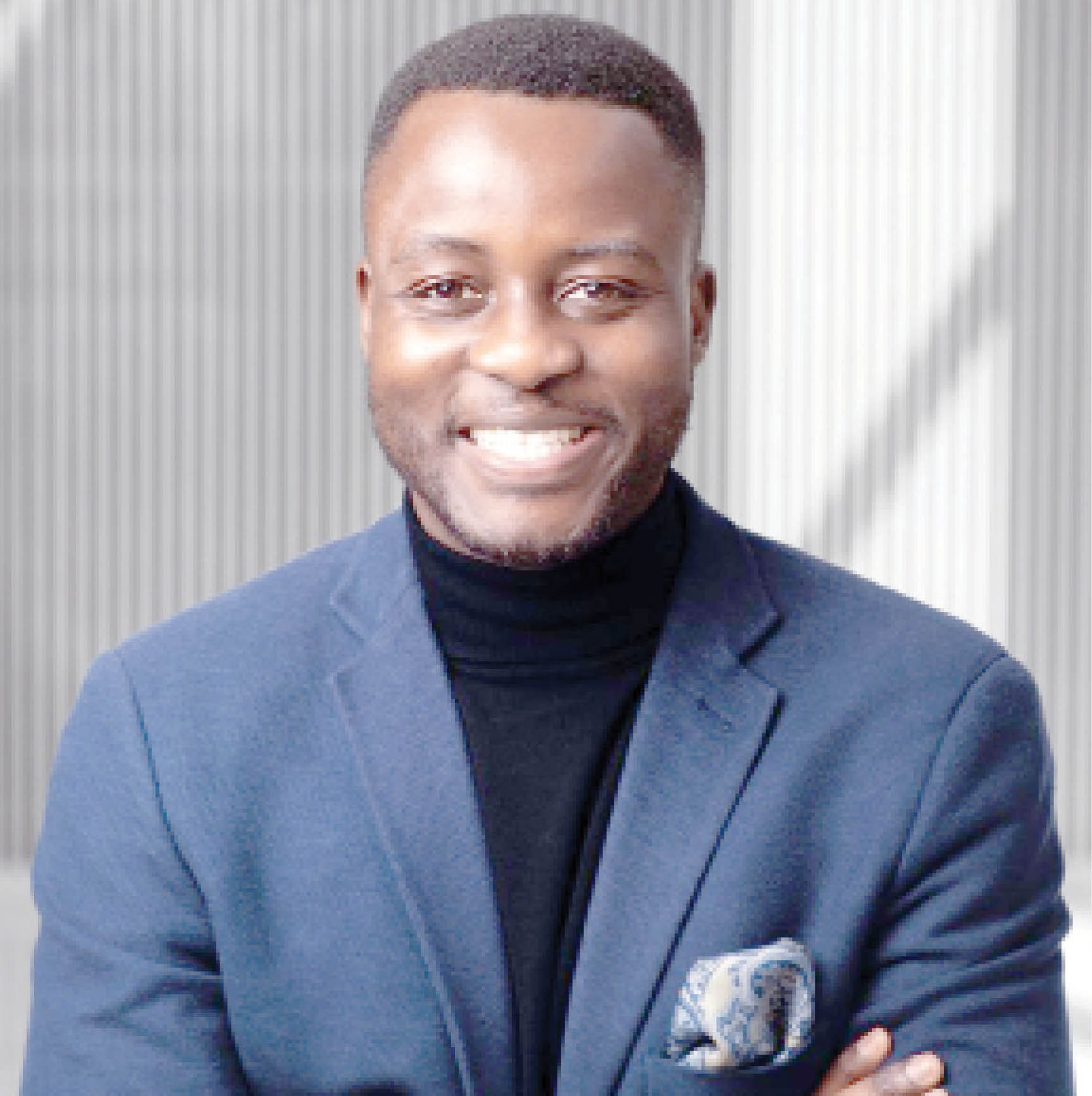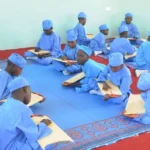As an artist, engineer and entrepreneur, Dipo Doherty seeks to define a vocabulary in his work that unites his African heritage and scientific background; a socio-scientific synthesis, with the human body being at the centre of his practice. An indigene of Lagos, Nigeria, he earned a BSc in Mechanical Engineering from the University of Virginia and is a self-taught artist. He is currently a masters’ fellow at the Massachusetts Institute of Technology where he is studying Integrated Design and Management. His artistic career began at the age of 21 in an attempt to approach his scientific inquiry of the world around him. Doherty has interpreted the human anatomy in his ideology, increasing its dimensionality in abstraction in his paintings, while expanding his visual language to other forms of media that reference socio-economic issues and scientific parallels in the highly dynamic and multi-cultural fabric of the world. One of the foremost young artists practicing in Nigeria, he is an MIT Art Scholar and Schnitzer Prize recipient, Arthouse Foundation Fellow, Rele Young Contemporary Artist, and a finalist for the inaugural Art X Prize in 2016. He has held past solo exhibitions at the Rele Gallery, Nike Art Gallery and the National Museum.
How would you describe Dipo Doherty in three words?
“Coherence in Duality”; that was the title of my second solo exhibition, and I still live by it. As an artist and engineer, I’m constantly getting exposed to new methods, processes and ideas from the two disciplines. Constant cross-pollination of ideas is what I enjoy the most.
How do you balance your artistic life with your engineer side? Do they influence each other?
Definitely; in fact, my initial dabble in the arts was an attempt to take many engineering concepts I studied in college and apply them in the art world.
What inspired you to pursue a career in visual arts?
My dad went to college in the US; so growing up in Nigeria, I lived in a household where artefacts from African and American cultures melded. This two-sided experience created a passion for bringing ideas from various cultures and disciplines together. It’s also why I decided to go to college in the US, which changed everything for me.
I got the chance to visit the MoMA in New York and experience the works from the abstract expressionist movement. Rothko was my introduction, and then I discovered Pollock, Fankenthaler and Sam Gilliam. Their works struck a chord in me and motivated me to be a part of this larger artistic conversation.

In your work, we can often find references to geometry and geometrical shapes. What does geometry mean for you?
Geometry is a universal language. I don’t think there’s any discipline you’ll investigate and not find some semblance of geometry in its expression of ideas. My work centres on lines. I think it’s the fundamentalist in me to reduce ideas I find to their simplest form and layer on more ideas to develop a geometric collage.
What themes do you pursue?
It’s less about a specific message and more of a transformative experience. It makes me so happy when my collectors tell me that their visual experience with my paintings seems to change with time, and I tell them that it’s reflective of how their life experience changes who they are as they pass through time. To me, the highest expression of art transforms with time and doesn’t stake a pole in a certain period.
What is your creative process like and where do you find inspiration?
I’m such a hoarder of digital photos, and that’s my favourite form of source material. Instagram is a powerful discovery tool and can feel like a rabbit hole experience. I enjoy clipping screenshots of machines, nature and architecture. I’m a huge fan of the brutalist movement, so I pull a lot of my inspiration from the complex shapes and forms I find in cities.
What about your mixed media works, such as “Covalence”; how did you work on those pieces and what is their story?
“Covalence” is a story about the gradual breakdown of the public school system in Nigeria. When I moved back to Lagos in 2013, I got the chance to volunteer at a public school district and was pretty upset at the state of it, the lack of enthusiasm and empathy from the teachers (who were probably not well paid), and thought really hard about what kind of piece I could make to capture how I felt. With “Covalence”, my goal is to express the complex identity of the students that inhabit this space, using an artefact that’s instrumental in this educational system, and to capture the degradation as I experienced it. By burning the yellow rulers, which are pretty commonplace in Nigerian schools, I’m demonstrating the irreversibility of the damage being done, and by weaving into the latticework of rulers a collage of photographs of actual students that went through this system, I feel I’m giving them a collective consciousness.
Are you experimenting with anything new?
I’m always tinkering. I’m currently experimenting with laser cutting and 3D printing. It’s always a dream to give volume to my work, and these techniques have been game-changing in bringing new ideas to my studio. My ethos has always been to immerse myself in various mediums, so who knows, maybe an acoustic piece might be my next hit.
How do you see the future of the art world as over the past months, we have witnessed major changes, especially related to digital art and the digital fruition of art-related content?
I couldn’t be more excited about digital art than I am now. I strongly believe it will reshape how we can build a community around our work and participate in the upside of our works in the secondary market. People always marvel at how artworks sell for lofty prices on the auction block but fail to realise little to none of these proceeds ever make it to the artist. With NFTs, we can tie smart contracts to our digital sales and have our works traded virtually, with a well-kept record of ownership and royalties off the incremental value of each sale of our work.
Do you have any upcoming exhibition or project?
NFTs and sculptures are in the works, and I’m really excited about how these two projects are developing.
Tell us about your philosophy about life?
Life is an abstract experience. Our body, along with its senses to see, hear, taste and smell, shape up a vocabulary of our world, and as time unrolls, we use these senses to create severe bonds with people, places and things. Geometry, the code of the material world, goes beyond the physicality of life. To many people, a circle might represent a fruit, the sun, a plate, or the law of karma in spiritual terms. It has been my goal to exploit the limitless interpretations within the domain of geometry through its scientific, cultural, and social relationship to humanity. And use that to create an abstract visual language that resonates uniquely with every observer.
I explore my life across several snapshots through time using the human form as a vessel. The eyes are a common theme in my work and play a special role because they represent awareness, existence, and intelligence. This exercise serves as a form of self-discovery for me, pondering my future and past in my present. It is my hope that these abstract experiences of mine provoke the same feeling of self-discovery in the eyes of the viewer as well.
Culled from www.altiba9.com

 Join Daily Trust WhatsApp Community For Quick Access To News and Happenings Around You.
Join Daily Trust WhatsApp Community For Quick Access To News and Happenings Around You.

